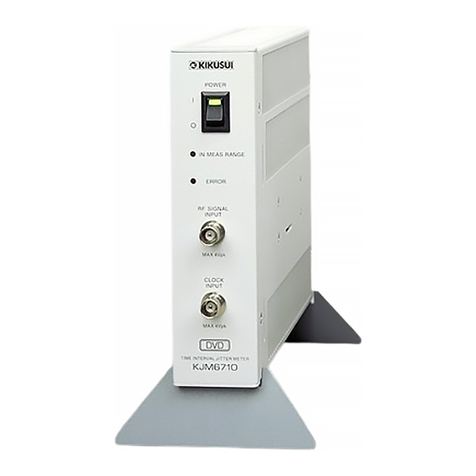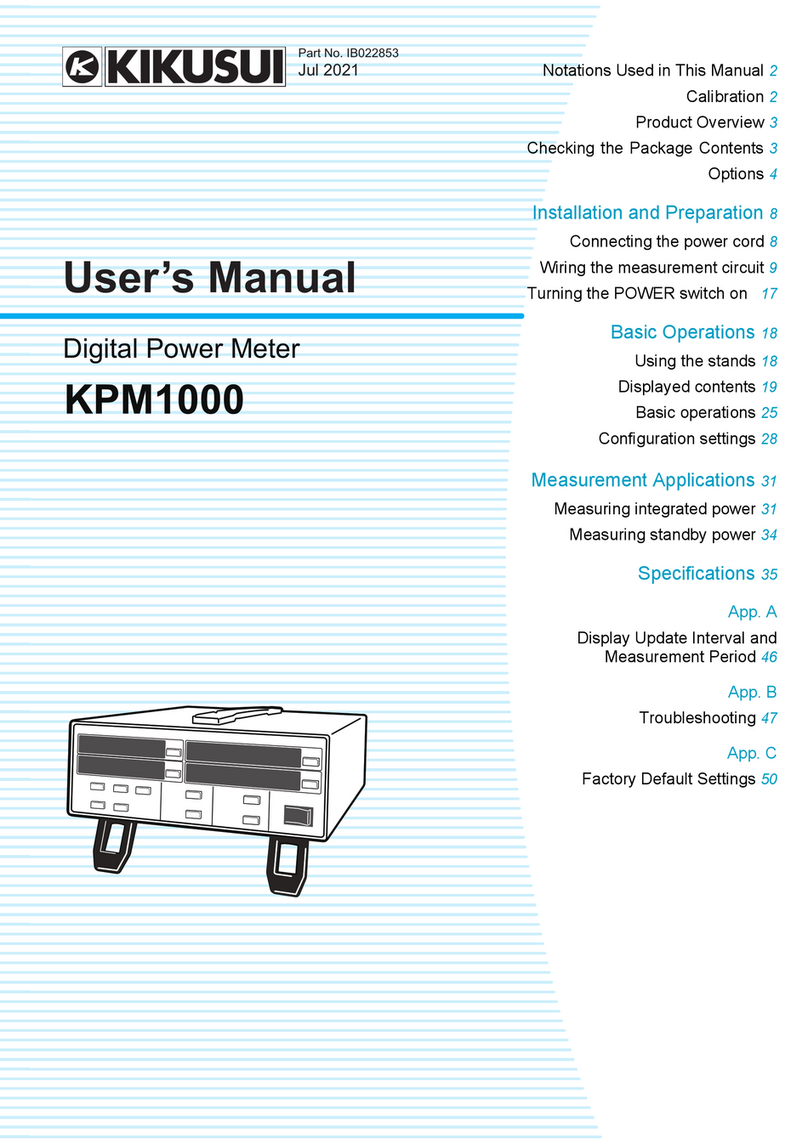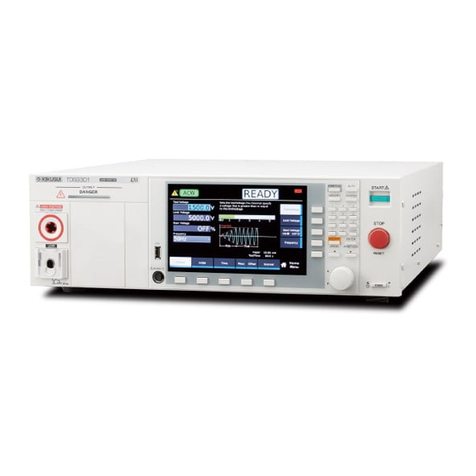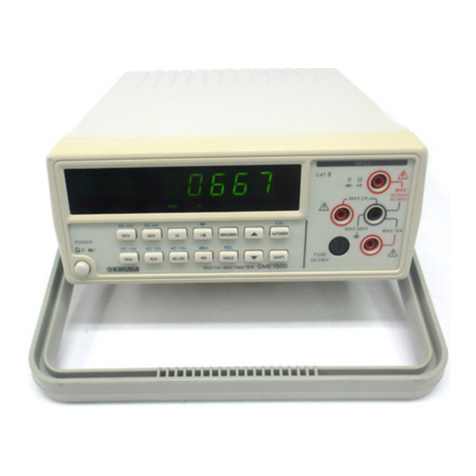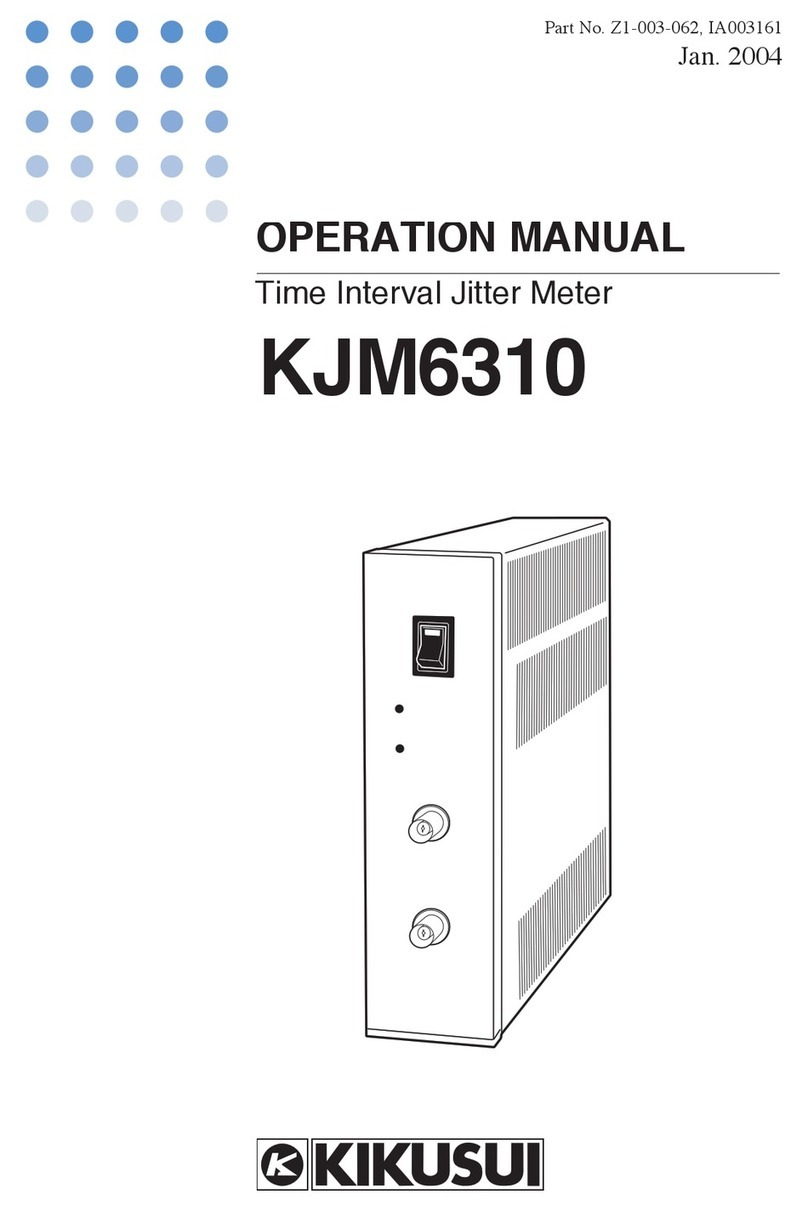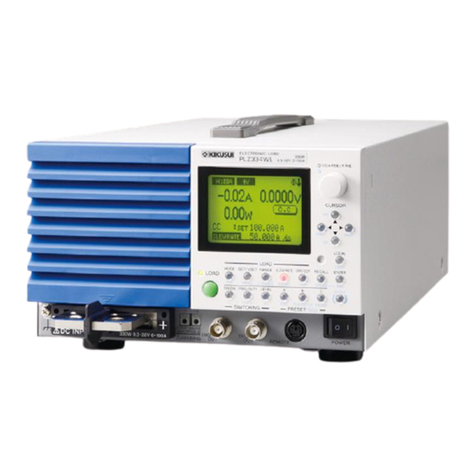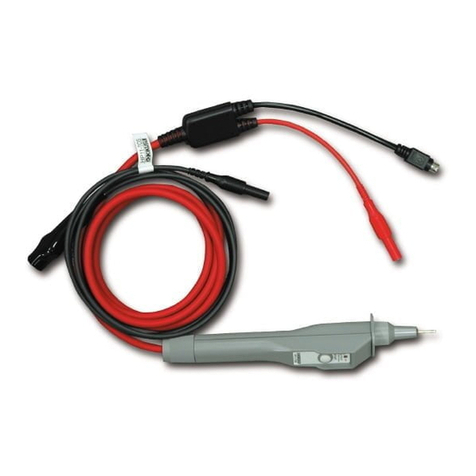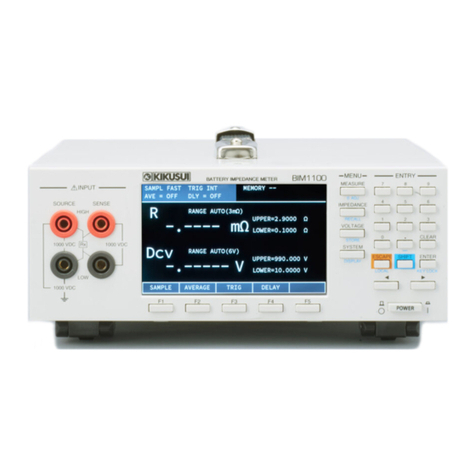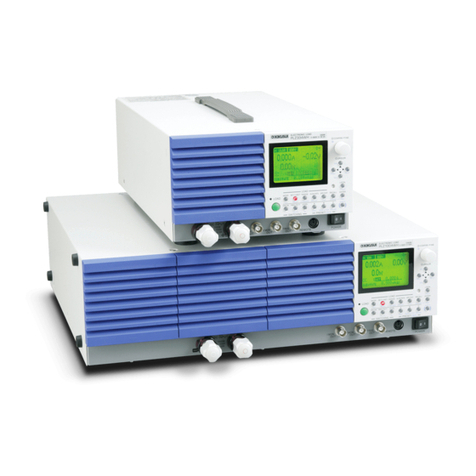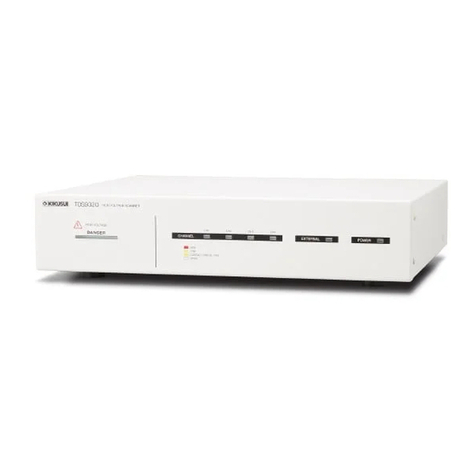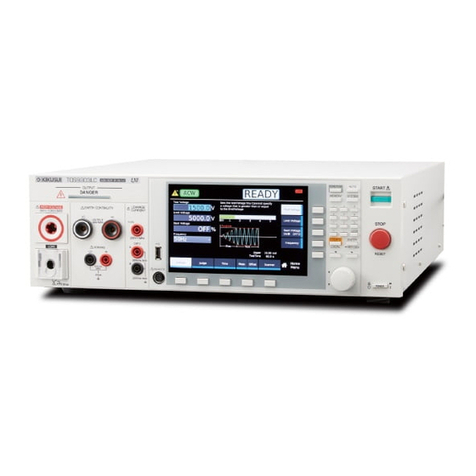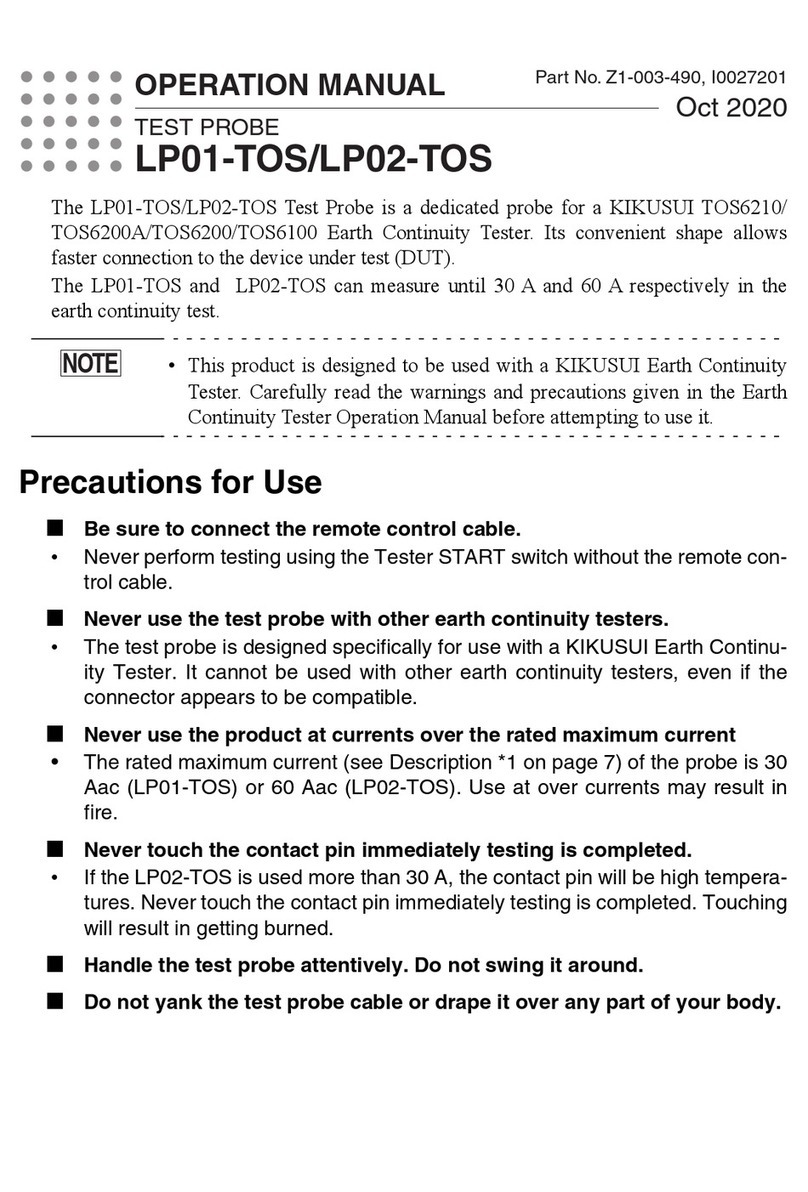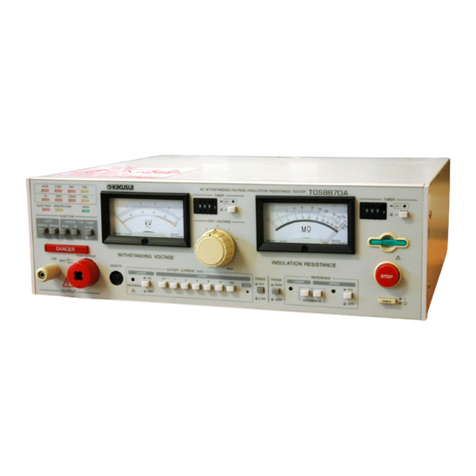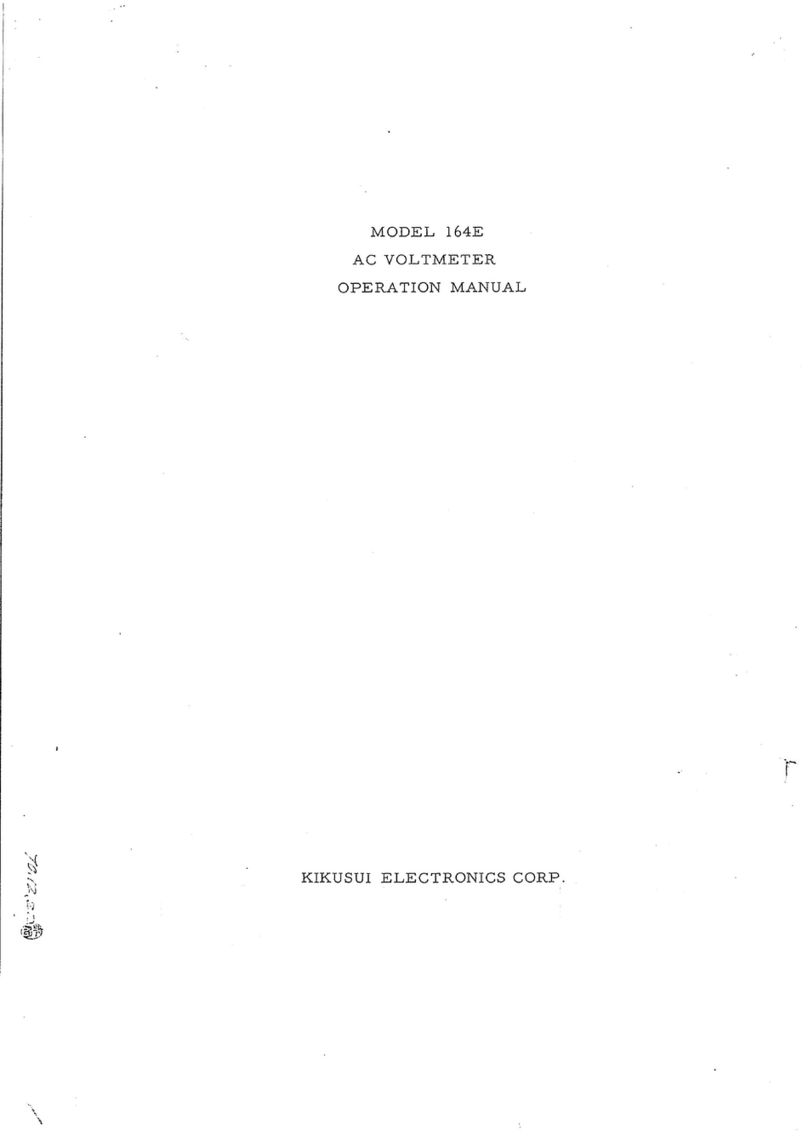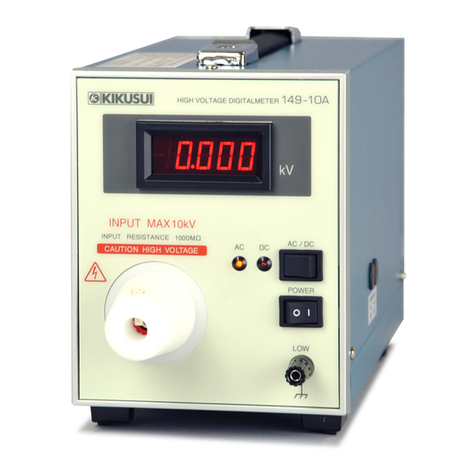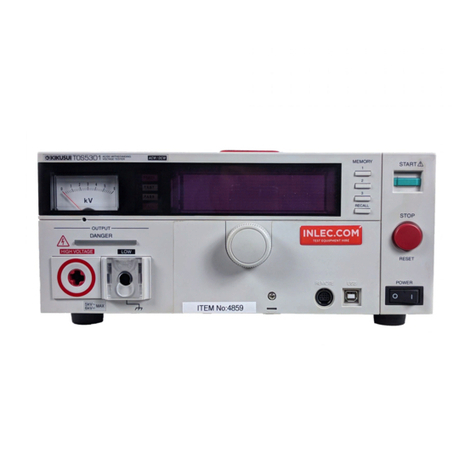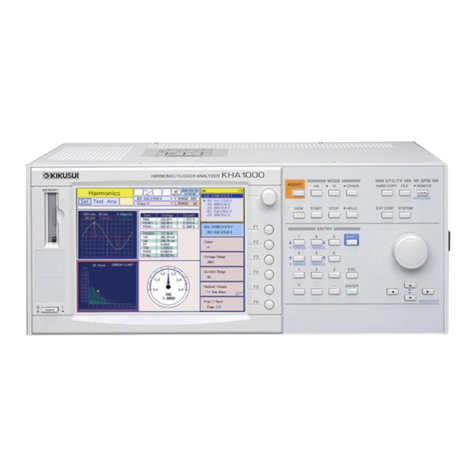
Turing on the Load
1Make sure that the load is off.
2Select an operation mode.
Press MODE to switch between modes.
3Select a current range.
Press RANGE to switch between ranges.
4Select a voltage range.
Press VRANGE (SHIFT + RANGE) to switch between ranges.
5Set the current, voltage, conductance, or power value.
Press SET/VSET to select a value, and set the value using the rotary
knob.
6Turn on the load.
Press LOAD. You can change the setting (current, voltage,
conductance, or power) while the load is on.
• +CV Mode
You can press +CV (SHIFT + MODE) in CC mode or CR mode to add CV.
You can add CV even while the load is on.
The value that you can set changes when you press SET/VSET.
Protection Functions
The electronic load has seven kinds of protection functions. When a
protection function is activated, an alarm occurs.
You can set the value to detect for the OCP, OPP, and UVP functions.
You can choose the action (load off or limit) that is performed by the OCP
and OPP functions from the menu.
You can stop an alarm by pressing ENTER. The alarm will be activated
again if its cause has not been eliminated.
Overcurrent Protection (OCP)
Activated at the specified value or at 110% of the maximum current.
To set the value, press OPP/OCP, and turn the rotary knob. Press OPP/
OCP to switch between OCP and OPP.
Overvoltage Protection (OVP)
Activated at 110 % of the maximum input voltage.
Overpower Protection (OPP)
Activated at the specified value or at 110 % of the maximum power.
To set the value, press OPP/OCP, and turn the rotary knob. Press OPP/
OCP to switch between OCP and OPP.
Undervoltage Protection (UVP)
Activated when the voltage goes below the set value.
To set the value, press UVP, and turn the rotary knob. If you do not want
to use UVP, select OFF.
Reverse-Connection Protection (REV)
Activated when reverse voltage is applied to the load input terminals.
Turn off the power of the DUT within 30 seconds.
If reverse voltage is detected when you are using the PLZ164WA/
PLZ664WA in a test where a DC power supply is connected in series
with the DUT, see “When the DC power supply and the DUT are
connected in series, and turning on/off of the DUT” (p. 5-5) in the User’s
Manual.
Overheat Protection (OHP)
Activated when the temperature of the internal power unit exceeds 95°C.
Alarm Input Protection
Activated when a low-level signal is applied to the ALARM INPUT pin of
the J1 terminal.
ABC Preset Memory
The preset memory can be used to save and recall current, resistance,
voltage, and power values.
• Saving
1Switch to the operation mode that you want to save,
and set its ranges and value.
2Press ABC.
The A, B, and C keys blink.
3Press the key that corresponds to the memory that you
want to save to.
The key will light. After you change the settings, the key light will turn off.
• Recalling
Switch to the operation mode that you want to load values into, and press
the key that corresponds to the memory that you want to recall (A, B, or
C).If Memory is set to SAFETY, press ENTER.
Setup Memory
You can use the setup memory to save and recall protection-function
activation values, ABC setup memory settings, menu settings, and so on.
• Saving
1Press STORE (SHIFT + RECALL).
2Use the rotary knob to select the memory no. that you
want to save to.
3Enter a memo.
4Press ENTER.
• Recalling
1Press RECALL.
You cannot recall settings while the load is on.
2Use the rotary knob to select the memory no. that you
want to recall.
3Press ENTER.
Switching Function
You can use this function to set two load current values and switch
between them.
Set the switching level and the switching interval.
• Switching Level
Press LEVEL to select a value, and set the value using the rotary knob.
Press % (SHIFT + LEVEL) to set the level as a percentage.
• Switching Interval
You can set the switching interval by specifying a frequency and duty
ratio or by specifying an amount of time.
Setting a Frequency and Duty Ratio
Use the FREQ/DUTY key and the rotary knob to set the values. Press
FREQ/DUTY to switch between the frequency and the duty ratio.
Setting a Time
Use the Th/TL (SHIFT+FREQ/DUTY) key and the rotary knob to set a
time. Press Th/TL (SHIFT+FREQ/DUTY) to switch between the high
and low sides of the switching time.
Functions Useful for Battery Discharge Testi
ng
• Elapsed Time Display (Count Time)
You can measure the time from the start of discharge to the cutoff
voltage. You can enable the elapsed time display from the menu.
• Auto Load-Off Timer (Cut Off Time)
You can use this function to turn the load off after a specified amount of
time has passed since the start of discharge and measure the closed
circuit voltage immediately before the load is turned off. You can set the
auto load-off timer from the menu.
Menu Settings
Menu 11Menu 2 Item Settings Description
1.Setup 1.Function Soft Start 1ms, 2ms, 5ms, 10ms, 20ms, 50ms,
100ms, 200ms
Soft start time
Count Time OFF, ON Elapsed time display
2.Protect Action OCP LOAD OFF, LIMIT Operation to be performed when OCP is activated
OPP LOAD OFF, LIMIT Operation to be performed when OPP is activated
3.Memory ABC Preset Memory Recall DIRECT, SAFETY Method for recalling the preset memory
4.Cut Off Time OFF, 0:00:01 to 999:59:59 Auto load-off timer
5.Response --- 1/1, 1/2, 1/5, 1/10 Response speed
2.Configuration21.Master/Slave Operation Master, Slave Master/slave switching
Parallel -, 2, 3, 4, 5 Number of devices operating in parallel
Booster -, 1, 2, 3, 4 Number of boosters connected in parallel
2.Power On Load On OFF, ON State of the load when the power switch is turned on
Key Lock OFF, ON Key lock
3.Interface Control GPIB, RS232C, USB Interface setting
GPIB Address 1 to 30 GPIB address
RS232C Baudrate 2400bps, 4800bps, 9600bps,
19200bps
Baud rate
Data3, Stop Data: 8
Stop: 1, 2
Data length (fixed at 8 bits) and the stop bit
Parity3NONE Parity (fixed at none)
Ack OFF, ON Acknowledgment
USB3VID 0x0B3E Vendor ID
PID xxxxxx Product ID
S/N xxxxxxxx Serial number
4.External Control OFF, V, R, Rinv External control for the CC, CR, and CP modes
LoadOn IN LOW, HIGH External control logic setting for turning the load on and off
4.Model Info3(MODEL) --- PLZxxxx Model name
VERSION SUB --- x.xx Firmware version
VERSION MAIN --- x.xx ROM version
1. In menu 1, 3. Calibration is for calibrating the electronic load. For details, see the User’s Manual.
2. The Configuration settings are not applied until you turn the power off and then on again.
3. This is information about the electronic load. It cannot be changed.
1Make sure that the load is off.
2Press MENU (SHIFT + SET/VSET).
The menu screen appears.
3Use the cursor keys and ENTER to select the item that
you want to set.
Press PREV (SHIFT + ) to return to the previous screen.
4Use the rotary knob to select a value.
5Press MENU (SHIFT + SET/VSET).
The menu screen will close and the settings that you configured will
be applied. The Configuration settings are not applied until you turn
the power off and then on again.
Other Settings
• Soft Start
In CC mode and CR mode, you can use this function to raise the
electronic load’s current gradually. This is useful in cases such as when
voltage application begins at the same time that the load is turned on
and when voltage is applied while the load is on and there is no load
input.
You can enable the soft start function from the menu.
• Locking the Electronic Load
You can press LOCK (SHIFT + LOCAL) to lock the electronic load and
disable all operations other than the turning on and off of the load,
sequence execution, and memory recall. To release the lock, press and
hold LOCK (until you hear a confirmation sound).
• Short Function
You can use this function to specify the maximum current value (CC
mode) or the minimum resistance value (CR mode) instantaneously.
To activate the short function, press SHORT (SHIFT + SLEW RATE) while
the load is on. Press SHORT again to deactivate the short function.
• Response Speed
This is the speed at which the input current and voltage values are
detected and controlled through negative feedback. You can set the
response speed in CC mode and CR mode.
You can set the response speed from the menu.
When you operate an electronic load in parallel or at high speeds (with
the switching function for example), refer to “Notes about Parallel and
High-Speed Operation” on the CD-ROM to set the response speed.
• Slew Rate Setting
When the current changes rapidly because you are using the switching
function or for some other reason, set the slew rate to determine the rate
at which the current is changed.
Press SLEW RATE, and set the value using the rotary knob.
• Resetting to the Factory Default Settings
While holding ENTER, turn on the power switch. The contents of the
memory are deleted.
